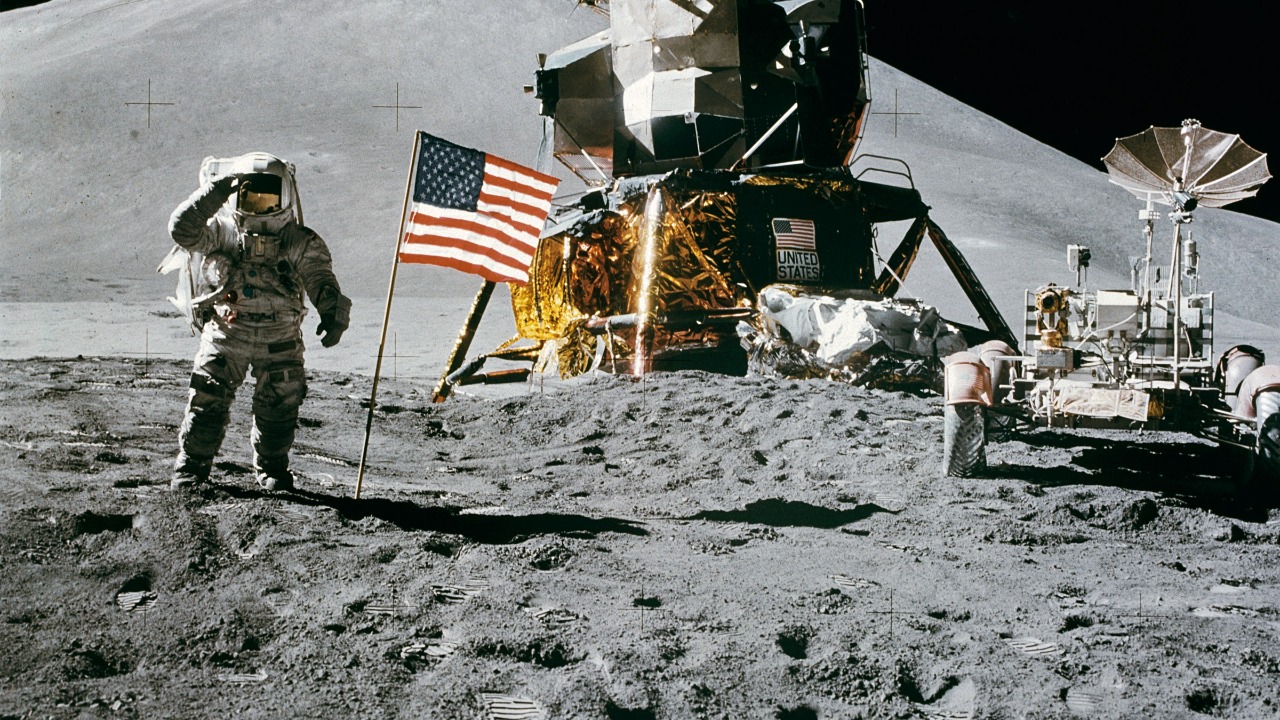
NASA’s Apollo program, a monumental endeavor spanning from 1961 to 1972, culminated in the historic Apollo 11 mission that landed the first humans on the Moon on July 20, 1969. The program’s total cost was a staggering $25.4 billion in then-year dollars, which included the development of the Saturn V rocket, command and lunar modules, and funding for 11 crewed missions. When adjusted for inflation to 2020 dollars, the cost skyrockets to an estimated $280 billion, making it one of the largest single peacetime government expenditures in US history. Recent reassessments suggest that the true cost could be even higher, up to $30 billion nominally, when considering ancillary research and development and contractor overheads that were not initially included.
Nominal Budget Breakdown
The Apollo program’s total nominal cost of $25.4 billion was allocated across various phases. A significant portion, $10.3 billion, was dedicated to the development of spacecraft and the launch vehicle from 1961 onward. The Saturn V rocket, the engineering cornerstone of the program, accounted for $5.5 billion of this allocation according to Planetary.org. The program’s annual funding peaked in fiscal year 1966 with $5.2 billion, which represented 4.4% of the entire federal budget. This funding facilitated parallel testing for Apollo 8 through 10.
Contractor distributions were another significant expenditure, with North American Aviation receiving $4.5 billion for the command module. These figures, derived from primary expenditure audits, do not include post-Apollo sustainment costs.
Inflation Adjustments and Modern Equivalents
When adjusted for inflation, the Apollo program’s $25.4 billion nominal outlay balloons to $152 billion in 2019 dollars. This demonstrates how economic shifts can significantly amplify the fiscal footprint of such a program over decades. Alternative adjustment methods, such as GDP deflators, yield an even higher figure of $257 billion in 2019 terms, illustrating the variances in assessing long-term value against contemporary federal spending (The Space Review).
By 2020, further recalibrations pushed the equivalent cost to $280 billion. This adjustment factored in the purchasing power for high-tech research and development, which tends to outpace general inflation rates.
Mission-Specific Cost Allocations
Looking at specific missions, the direct cost for the Apollo 11 mission, which achieved the first Moon landing in July 1969, was $355 million. This figure covered the Saturn V launch from Kennedy Space Center and Neil Armstrong’s historic steps on the lunar surface (CBS News). Unmanned precursor missions, such as the Apollo 4 and 6 tests, totaled $1.2 billion in 1967-1968. These tests validated the Saturn V’s 7.5 million-pound thrust capability before crewed flights.
Later missions saw escalating expenses, with Apollo 17 costing $450 million in 1972. This included the $38 million addition of the lunar rover, which allowed for extended surface exploration.
Apollo’s Share of NASA’s Funding
From 1960 to 1973, the Apollo program consumed 60% of NASA’s total budget of $43 billion, peaking at 70% in 1966. This significant allocation sidelined other initiatives, such as the Mariner probes. The shift in NASA’s budget from $500 million annually in 1960 to $5.9 billion by 1966 was largely driven by President Kennedy’s 1961 pledge to land a man on the Moon, which redirected 2% of the Gross National Product (GNP) towards space exploration.
After the successful Moon landing in 1969, Apollo funding dropped to $1.2 billion by 1973. This allowed for the reallocation of funds to other projects, such as Skylab and the precursor studies for the Space Shuttle program.
Ancillary and Hidden Expenditures
A 2019 reassessment suggested that there were additional costs associated with the Apollo program that were not initially tracked. These included an estimated $4-5 billion for facilities like the $800 million Vehicle Assembly Building at Kennedy Space Center, which was built specifically for Saturn V integration (The Space Review).
There was also cross-funding from the military, including $2 billion from the Air Force for shared rocket technology under the Manned Orbiting Laboratory (MOL) program. This indirectly subsidized the development of Apollo’s guidance systems. International contributions, such as the $100 million in support for European tracking stations, were often omitted from US-only tallies but were essential for global mission coverage.
Economic Impacts and Returns
The Apollo program had significant economic impacts and returns. For every $1 invested, it is estimated that there was a $7 return through spin-offs like integrated circuits and materials science. This generated $350 billion in economic activity by 2019 estimates, through job creation in 20,000 firms (BBC Future).
However, there were also opportunity costs. Apollo’s 4% slice of the GDP in 1966 diverted funds from Vietnam War efforts and domestic programs. Despite this, it is believed to have boosted GDP growth by 0.5% annually through the diffusion of technology. The program also had a significant impact on the workforce, employing 400,000 people at its peak with a $10 billion annual payroll. This fostered economic hubs in Houston and Huntsville, which continue to play a significant role in today’s $100 billion space economy.
More from MorningOverview